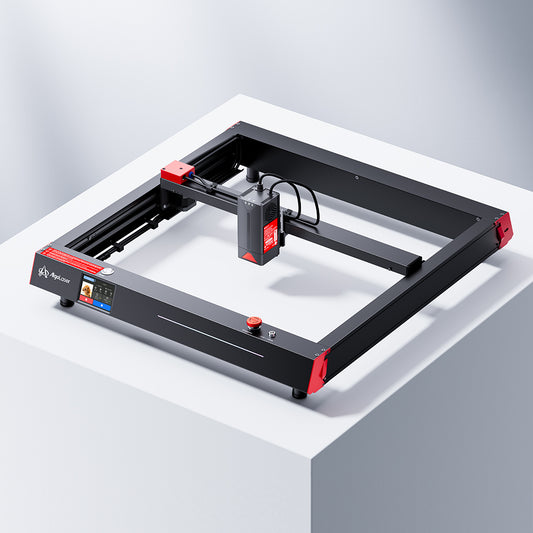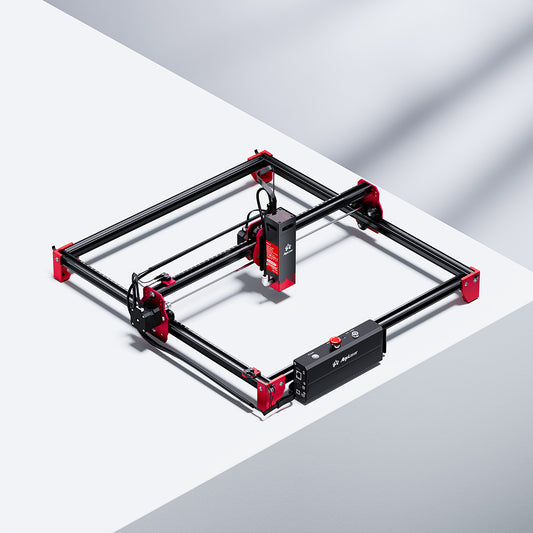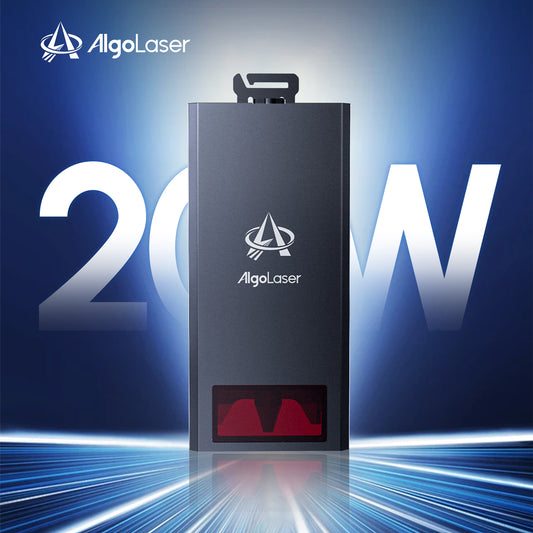Getting to Know Laser Engraving Craft: Exploring Diode Laser Engravers
Laser engraving, also referred to as laser etching, stands as a versatile and precise surface treatment technique. Its applications span across various industries, offering unparalleled advantages over traditional printing methods. We delve into the intricacies of laser engraving, with a specific focus on diode laser engraving machines. Let's embark on a journey to uncover the potential and possibilities of this innovative technology.
Understanding Laser Engraving Craft
Laser engraving, often interchangeably termed as laser etching, represents a surface treatment method that utilizes laser technology to mark, etch, or engrave materials. Unlike traditional printing techniques such as screen printing or pad printing, laser engraving offers distinct advantages including enhanced marking speed, aesthetic appeal, high resolution, durability, precision, and cost-effectiveness.
Craft Definition
The essence of laser engraving lies in the utilization of a laser beam's energy to induce chemical or physical changes on the surface of materials, thereby creating marks, patterns, or text. This process can be categorized into two main methods: raster engraving and vector cutting.
Raster Engraving
This method involves the oscillation of the laser head horizontally to create a series of dots, forming lines that eventually compose the desired image or text.
Vector Cutting
Contrary to raster engraving, vector cutting focuses on engraving along the outer contour of graphics or text, commonly used for cutting through materials such as wood, paper, and acrylic.

Exploring the Characteristics of Laser Engraving
Principles
The core principles underlying laser engraving are centered around the focused energy of laser beams, which interact with the surface of materials to induce changes. These changes can manifest through oxidation, evaporation of surface material, or chemical/physical alterations, resulting in the desired marks or patterns.
Performance
The performance of a laser engraver hinges upon key factors such as engraving speed, intensity, and spot size.
Engraving Speed: This refers to the velocity at which the laser head moves, typically measured in inches per second (IPS). Higher speeds translate to increased productivity, and they also influence cutting or engraving depth.
Engraving Intensity
Higher intensity levels lead to deeper cuts or engravings.
Spot Size: Adjusted using lenses of varying focal lengths, spot size determines the resolution of the engraving. Smaller spots are ideal for high-resolution work, while larger spots are suited for vector cutting.

Anatomy of Diode Laser Engraving Machines
Diode laser engraving machines consist of several essential components including laser lenses, cooling systems, and control panels. These machines are designed to offer precision, efficiency, and versatility in various applications.

Materials Suited for Diode Laser Engraving
The adaptability of diode laser engraving machines extends to a wide array of materials, including but not limited to: Wood, Acrylic, Metal sheets, Glass, Stone, Crystal, Paper, Leather, Plastic, And many more...

Parameters and Process Optimization
Achieving optimal results with diode laser engraving machines entails fine-tuning various parameters and optimizing the engraving process. This involves adjusting parameters such as current intensity, focus, and engraving speed to suit specific materials and desired outcomes.

Common Issues and Solutions in Diode Laser Engraving
Despite the precision and efficiency of diode laser engraving machines, operators may encounter various challenges during the engraving process. Understanding these common issues and implementing effective solutions is crucial for maintaining optimal performance and achieving high-quality results. Let's explore some of the most prevalent issues and practical solutions:
1. Inconsistent Engraving Depth
Issue
The engraving depth varies across different sections of the material, resulting in inconsistent results.
Solution
Check Material Surface: Ensure the material surface is flat and uniform to facilitate consistent engraving depth.
Optimize Focus: Adjust the focus of the laser beam to maintain consistent depth throughout the engraving process.
Calibrate Parameters: Fine-tune engraving parameters such as power intensity and speed to achieve uniform results.
2. Unclear or Blurry Engravings
Issue
Engravings appear blurry or lack clarity, especially in intricate designs or small text.
Solution
Optimize Resolution: Increase the resolution settings to enhance clarity, especially for detailed designs.
Clean Optics: Regularly clean the laser lenses and mirrors to remove dust or debris that may distort the laser beam.
Adjust Speed and Power: Experiment with different combinations of speed and power settings to find the optimal balance for clear engravings.
3. Material Ignition or Burning
Issue
Certain materials, especially organic or flammable substances, may ignite or burn during the engraving process.
Solution
Lower Power Settings: Reduce the power intensity to minimize heat generation and prevent material ignition.
Increase Cooling: Improve ventilation and cooling systems to dissipate heat more effectively, reducing the risk of material combustion.
Use Protective Coatings: Apply protective coatings or masking materials on sensitive surfaces to minimize heat damage.
4. Warping or Distortion of Materials
Issue
Some materials may warp or distort due to excessive heat during the engraving process, resulting in uneven or distorted engravings.
Solution
Optimize Cooling: Enhance cooling mechanisms to maintain consistent temperature levels and minimize thermal expansion.
Preheat Materials: Preheating certain materials can reduce thermal shock and minimize warping during engraving.
Use Supports: Utilize support structures or fixtures to stabilize materials and prevent deformation during engraving.
5. Alignment Errors in Multi-Pass Engravings
Issue
Misalignment occurs between successive passes during multi-pass engraving, leading to inconsistencies in the final result.
Solution
Calibrate Alignment: Ensure proper calibration of the laser engraving machine to maintain accurate alignment between passes.
Overlap Settings: Adjust overlap settings between passes to ensure seamless integration and minimize visible seams.
Check Mechanical Components: Inspect mechanical components such as belts, guides, and motors for any signs of wear or misalignment that may affect engraving precision.

Applications in Cutting and Engraving
Diode laser engraving machines find extensive applications in cutting and engraving operations across diverse industries. From intricate designs on jewelry to precise cuts in industrial manufacturing, the versatility of these machines makes them indispensable tools in modern production processes.

Conclusion
In conclusion, diode laser engraving machines represent a pinnacle of precision and efficiency in surface treatment technology. Their ability to mark, etch, or cut a wide range of materials with unparalleled accuracy has revolutionized numerous industries. Whether it's crafting intricate designs or mass-producing components, the versatility and reliability of diode laser engraving machines make them indispensable assets in today's manufacturing landscape. As technology continues to advance, the potential applications of laser engraving are poised to expand further, opening up new realms of possibility for creative expression and industrial innovation.





